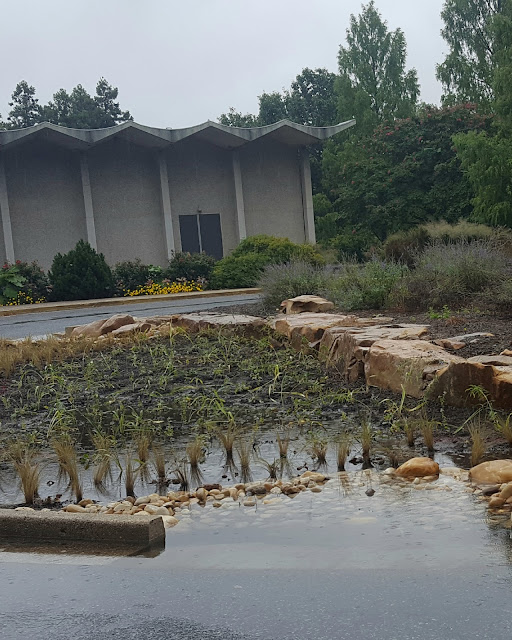Bradley Evans along with gardeners and interns planted the last of the five rain gardens in the main parking lot. The gardens came as part of the contract for the Springhouse Run Stream Restoration and will cut down the amount of runoff that we send into the storm sewer.
I'm really psyched for the gardens. I sat in on a few of the initial meetings with the National Capital Area Garden Clubs, Inc., sponsors of the gardens. They proposed that we do themed gardens to show visitors various options for rain gardens. There's a Butterfly Garden, a Low-maintenance Garden, a Formal/Traditional, a Xeric, and finally a Coastal Plain that I lobbied for. Brad developed the planting schemes and sourced the plants. He's been planting them for a few months now. The top, Xeric garden was just planted this morning. The bottom Traditional garden was the first planted.
The plant choices are what's got me excited about the gardens. I'm old enough to have been around for the beginnings of the "rain garden" phenomenon. Plus I live in Prince Georges County Maryland the home of the "original" rain garden. I've been around for the experience to date. The first rain gardens focused on "rain" when selecting plant material. I remember cardinal flowers were popular along with a litany of "wet meadow" species. Well, it turns out that raingardens, with their perfectly draining engineered soil, tend more towards the xeric end of the spectrum than the hydric. Designers have recognized that but their palettes are, maybe not unimaginative, but typically pretty limited. Brad has a lot of cool plants in here, selections I've not seen in rain gardens before: Salvia lyrata, Bouteloua gracilis, Ilex vomitoria, various sedums, Nasella tenuissima, Salvia azurea, and on and on and on.












